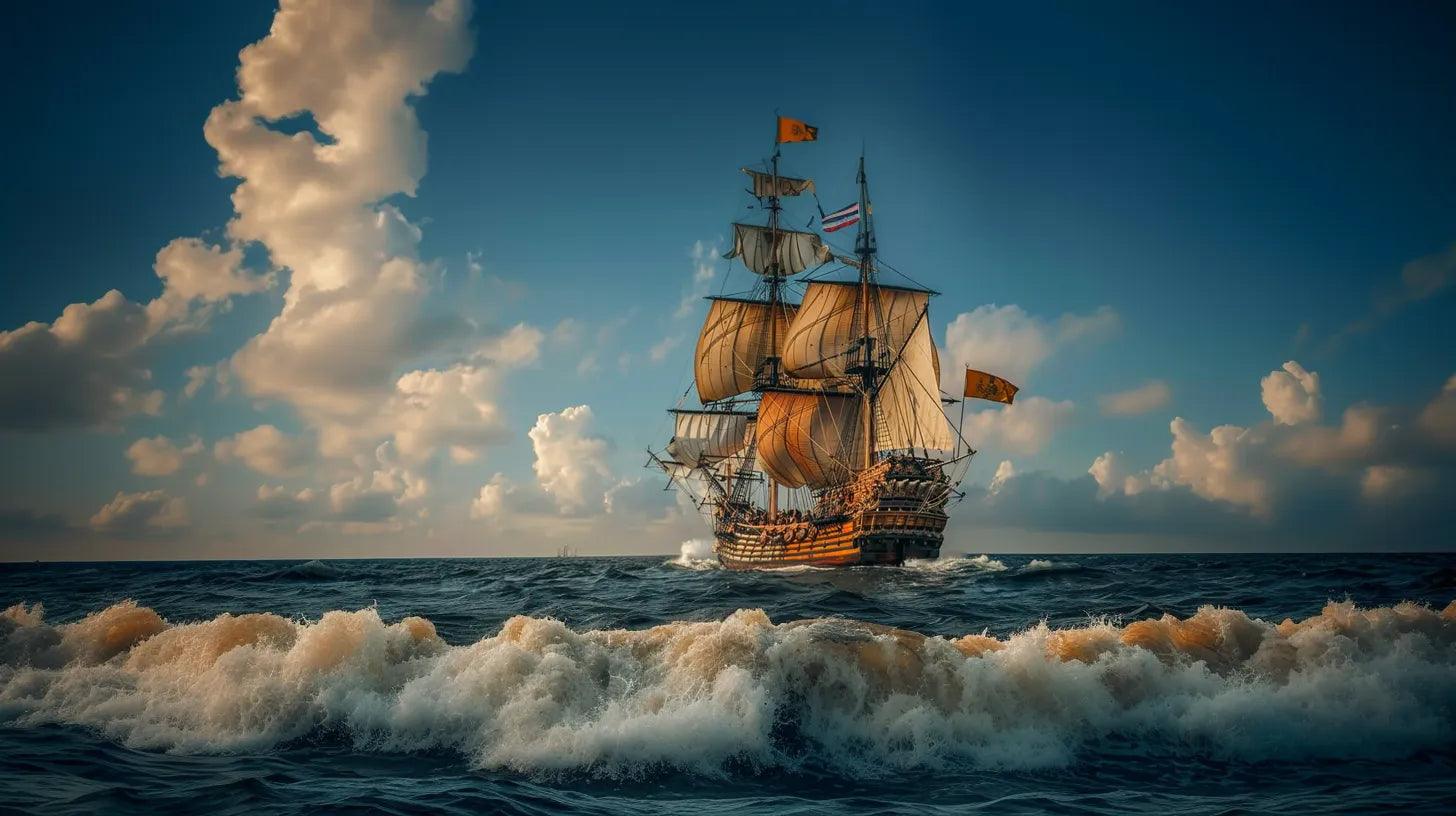
De Liefde: The Enigmatic Journey from Dutch Glory to North Sea Tragedy
The 17th and early 18th centuries marked the Golden Age of Dutch maritime prowess, a period characterized by exploration, trade, and naval dominance. Among the vessels that sailed the high seas under the Dutch flag was De Liefde, a ship whose fate would intertwine with the rugged coastlines of the Shetland Islands and the annals of maritime lore.
Building and Commissioning of De Liefde
Constructed in the bustling shipyards of Amsterdam in 1698, De Liefde was a product of the Vereenigde Oostindische Compagnie (VOC), also known as the Dutch East India Company. This wooden 30-gun sailing ship was designed for the treacherous journeys to the East Indies, carrying goods, soldiers, and hopes of profitable returns.
The Final Voyage
In the autumn of 1711, under the command of Captain Meikens Barend, De Liefde embarked on what would be her last voyage from Texel, laden with a precious cargo of gold and silver coins valued at 227,000 guilders and accompanied by a crew of 300, including 100 soldiers. The ship was part of a convoy navigating the North Sea, aiming to avoid the perils posed by the War of the Spanish Succession and French privateers.
The Wreck
The fateful night of November 7, 1711, saw De Liefde succumb to a violent storm off the Shetland Islands. The ship ran aground at Dregging Geo, Mio Ness on the Out Skerries, breaking apart swiftly and leaving only one survivor - a watchman cast onto the cliffs by the merciless sea.
Salvage Efforts and Discoveries
The years following the disaster saw various attempts to salvage the wreck, with the local populace and later, professional salvors, retrieving a portion of the cargo. Notably, in 1965, the wreck was rediscovered, leading to the recovery of numerous artifacts and coins, including gold ducats and silver ducatons minted in the Netherlands.
Legacy and Archaeological Insights
Subsequent archaeological expeditions have provided a deeper understanding of De Liefde's final journey, uncovering more about the ship's structure, cargo, and the perils of maritime travel during the VOC's heyday. The Shetland Museum houses many of these artifacts, offering a tangible link to the past.
Conclusion
De Liefde's story is a compelling chapter in the history of naval exploration and trade, reflecting the ambitions, risks, and human endeavors of the Age of Sail. Today, it captivates historians, archaeologists, and maritime enthusiasts, serving as a reminder of the sea's unforgiving nature and the allure of undiscovered treasures lying beneath its waves.




